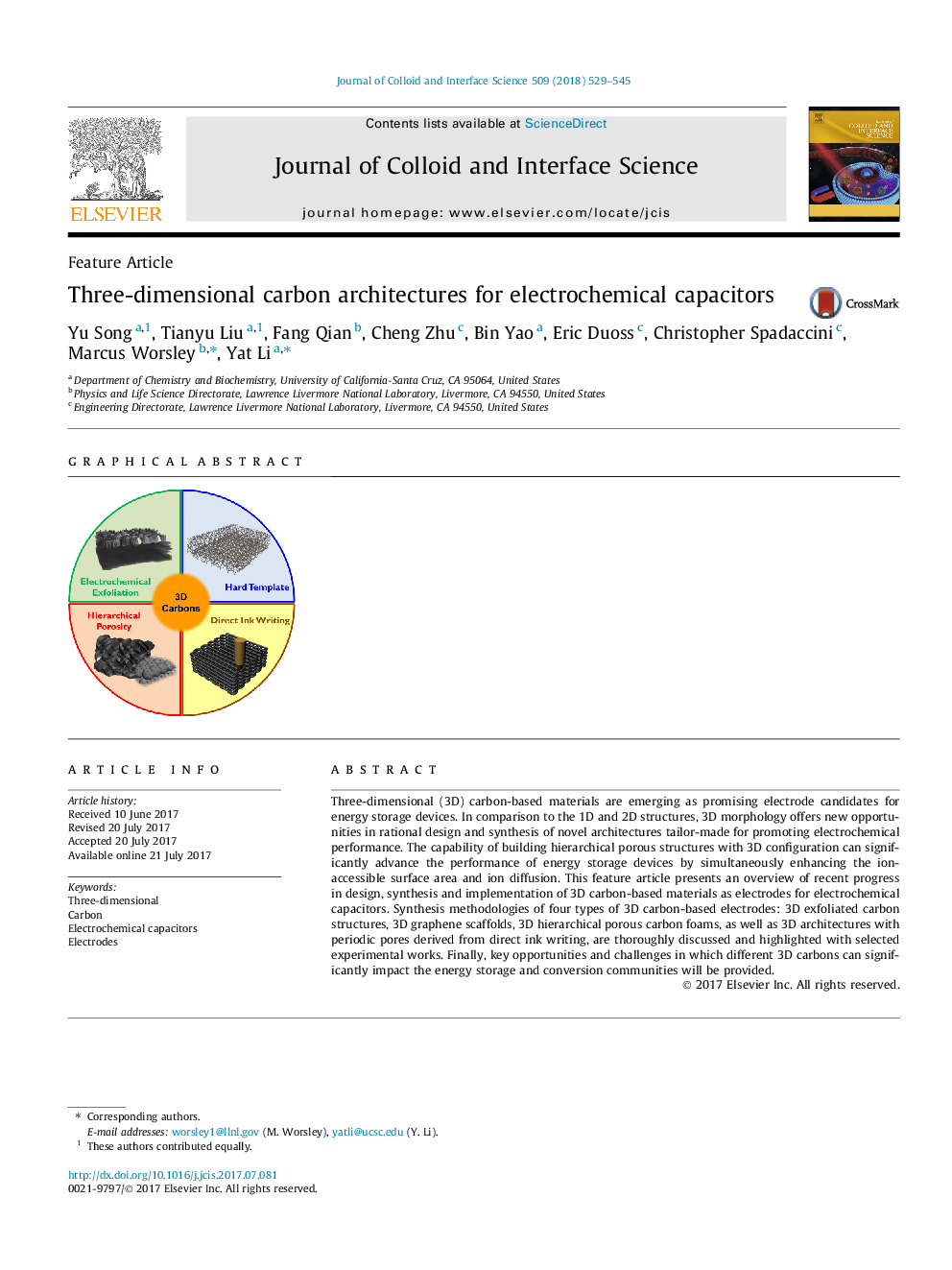| Article ID | Journal | Published Year | Pages | File Type |
|---|---|---|---|---|
| 4984271 | Journal of Colloid and Interface Science | 2018 | 17 Pages |
Three-dimensional (3D) carbon-based materials are emerging as promising electrode candidates for energy storage devices. In comparison to the 1D and 2D structures, 3D morphology offers new opportunities in rational design and synthesis of novel architectures tailor-made for promoting electrochemical performance. The capability of building hierarchical porous structures with 3D configuration can significantly advance the performance of energy storage devices by simultaneously enhancing the ion-accessible surface area and ion diffusion. This feature article presents an overview of recent progress in design, synthesis and implementation of 3D carbon-based materials as electrodes for electrochemical capacitors. Synthesis methodologies of four types of 3D carbon-based electrodes: 3D exfoliated carbon structures, 3D graphene scaffolds, 3D hierarchical porous carbon foams, as well as 3D architectures with periodic pores derived from direct ink writing, are thoroughly discussed and highlighted with selected experimental works. Finally, key opportunities and challenges in which different 3D carbons can significantly impact the energy storage and conversion communities will be provided.
Graphical abstractDownload high-res image (96KB)Download full-size image
